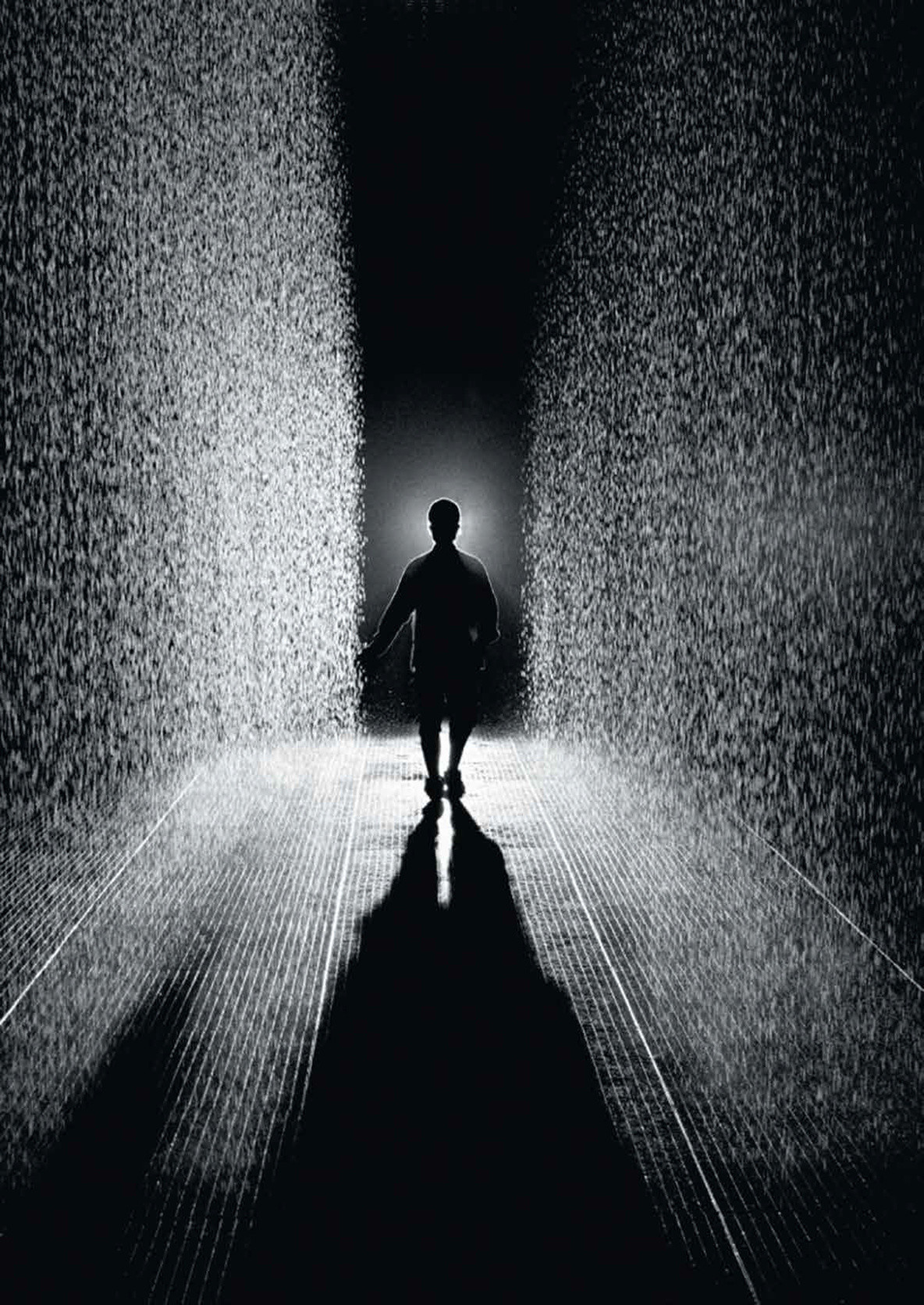Rain Room by Random International is an interactive exhibit that has been moving around the world. It debuted in London in 2012. From then it has moved to different places like the MOMA and LACMA.

Rain Room is a field of falling water that pauses when a human body is detected. As a person walks through the field, it continues to rain everywhere, but where they are standing.
The artist depicts Rain Room as an amplified representation of our environment.
“Human presence prevents the rain from falling, creating a unique atmosphere and exploring how human relationships to each other and to nature are increasingly mediated through technology.”
As people enter the installation, they enter a sate of duality, where they are both exposed and protected from the rain at the same time. The sound and smell of the rain are there, but the rain never touches the visitors, leaving them completely dry, while they are surrounded by continual downpour.
Random International uses science and technology to create experiences that aim to question and challenge the human experience within a machine-led world. Rain room creates a responsive relationship between visitor and artwork, man and machine.
Exhibit components: Water, injection moulded tiles, solenoid valves, pressure regulators, custom software, 3D tracking cameras, steel beams, water management system, and grated floor.
This installation relates to the themes of the class because it senses something from the physical world, computes it into a chain of commands that closes certain valves, then reacts to it in the physical world.
Theoretically, the mechanisms used in this project could be applied to a lot of things in the world today. For example, if this system was imposed on a covered outdoors area of a building, it could help solve flooding and gutter issues. Instead of collecting all the runoff water at one place, this relieves the pressure of trying to cover an entire space, but rather only cover where needs to be covered (i.e. where a person is). The more responsive we design environments, the more we are able to control the desired outputs.
A way someone could work this idea into their project is if they use movement sensors to do detect someone using their installation, then make something move based on that move. Essentially, when something moves, another thing moves.
Sources:
http://www.lacma.org/rainroom#landing
https://www.moma.org/calendar/exhibitions/1352
Leave a Reply
You must be logged in to post a comment.